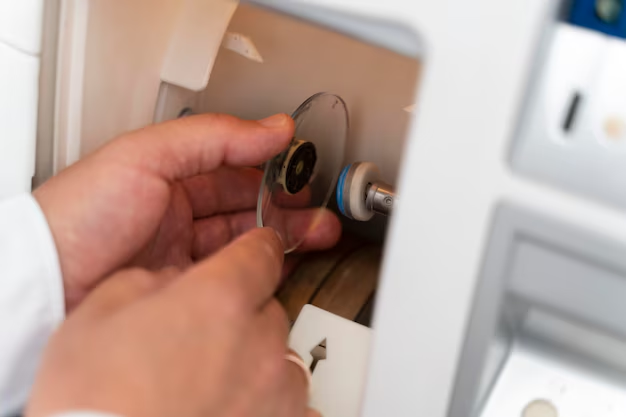How Much Copper Is Actually in Your Refrigerator?
Your refrigerator is a staple in your kitchen, quietly functioning around the clock to keep your food fresh and your beverages cold. What you might not think about often is the intricate network of components within it, including materials like copper, which plays an essential role in the appliance’s operation. Curious about how much copper is harbored in your fridge and why it matters? Let's embark on an exploratory journey into the world inside your refrigerator.
The Role of Copper in Refrigerators
Copper is well-regarded for its excellent electrical and thermal conductivity, making it an integral material in numerous household appliances, including refrigerators. Let’s delve into why copper is so pivotal:
Why Copper?
- Thermal Conductivity: Copper’s ability to rapidly transfer heat makes it ideal for components like condenser and evaporator coils. These parts are responsible for heat exchange in refrigeration cycles.
- Electrical Conductivity: Essential in the wiring and circuitry, copper ensures efficient electricity flow, which is vital for a smoothly operating appliance.
- Corrosion Resistance: Copper’s robustness against corrosion ensures a longer lifespan for refrigerator components, reducing the need for frequent replacements.
Components Involving Copper
Condenser and Evaporator Coils: These are primarily copper due to their role in rapidly transferring heat.
Electrical Wiring: Most of the internal and external wiring harnesses are made from copper to ensure efficient energy use.
Compressor Motor Windings: Copper wire is used in motor windings for its capacity to handle electrical loads efficiently.
Estimating Copper Content in a Refrigerator
Wondering about the amount of copper inside your refrigerator? While the amount can vary depending on the model and size, standard estimates give us a general idea.
General Estimates
- Small Refrigerators: These contain less copper, typically used mainly in wiring and smaller coils. Estimates suggest around 1 to 2 kilograms.
- Medium to Large Refrigerators: Larger models may contain 3 to 5 kilograms of copper, distributed across more extensive coil systems and heavier-duty wiring.
Factors Affecting Copper Amount
Several factors can influence the amount of copper in your fridge:
- Model and Brand: High-end brands often incorporate more efficient copper components.
- Size: Larger refrigerators naturally require larger coil systems and more wiring.
- Efficiency: Newer energy-efficient models might use more copper in optimizing performance.
Why Knowing Copper Content Can Be Beneficial
Understanding the amount of copper in your fridge isn’t just a fun fact—it has practical implications.
Recycling and Environmental Considerations
Recycling Value: Copper is a valuable metal, highly sought after in recycling efforts. Knowing the copper content can inform decisions regarding appliance disposal.
Eco-Friendly Decisions: Being aware of material compositions can guide you towards more sustainable purchasing and disposal choices.
Cost Implications
- Resale and Scrap Value: Appliances with significant copper can potentially fetch better prices in resale or as scrap, due to the metal’s market value.
Related Insights Into Material Use
While copper plays a crucial role, it’s just one part of the refrigerator's material puzzle. Let’s explore a few associated aspects:
Aluminum vs. Copper
Weight and Cost: Aluminum is lighter and generally less expensive, often used as an alternative to copper for certain components. However, it doesn’t match copper in thermal or electrical efficiency.
Durability: Aluminum parts may not last as long as copper due to lower corrosion resistance, influencing long-term maintenance needs.
Alternative Technologies and Future Innovations
Non-Metal Components: Some manufacturers are developing non-metal alternatives, such as certain plastics, which may alter the metal content in future models.
Energy Efficiency Technologies: Advances in technology may continue to shift the balance towards more copper for increased efficiency.
Practical Tips: What Can You Do?
When considering the copper content in your refrigerator, here are some practical steps and tips to keep in mind:
♻️ Recycling Consultations: Reach out to local recycling centers for specific advice on recycling copper-containing appliances.
🔍 Research Before Purchase: Research the materials used in potential new refrigerator models to understand both environmental and cost implications.
💡 Energy Efficient Choices: Opt for energy-efficient models that might use copper more effectively, reducing long-term operational costs.
🗑️ Responsible Disposal: When disposing of an old refrigerator, do so at a facility that can recover and recycle copper and other valuable materials.
Summary of Key Takeaways
Here’s a quick overview of what we’ve learned about copper in refrigerators:
- Copper's Role: Essential for heat exchange, electrical flow, and part longevity.
- Average Copper Amounts: 1–5 kg depending on the size and model.
- Value in Recycling: Copper’s value makes disposal and recycling an opportunity to recover costs.
- Material Use Trends: Newer technologies might change copper usage in the future.
- Practical Steps: Consider recycling consultations, research-based purchases, and responsible disposal for leftover appliances.
Understanding copper's place in the refrigerator helps demystify what’s behind that sleek exterior, offering you insights into better decision-making for both purchasing and disposing of this everyday essential. Who knew one could gain so much from dissecting the guts of a fridge? So, the next time you see your refrigerator, you'll know there's more than meets the eye—quite a bit of copper, in fact, quietly doing its job.
